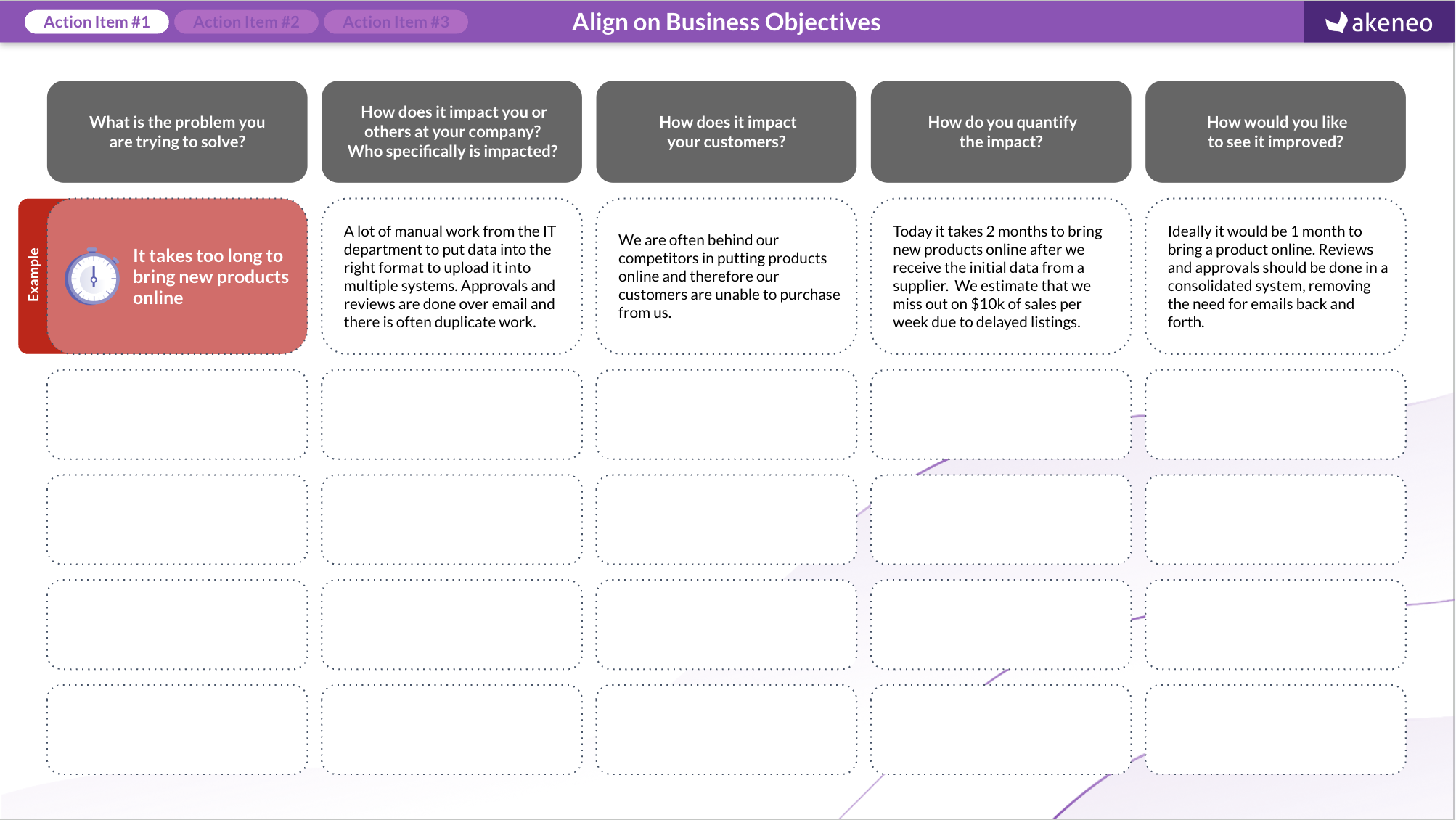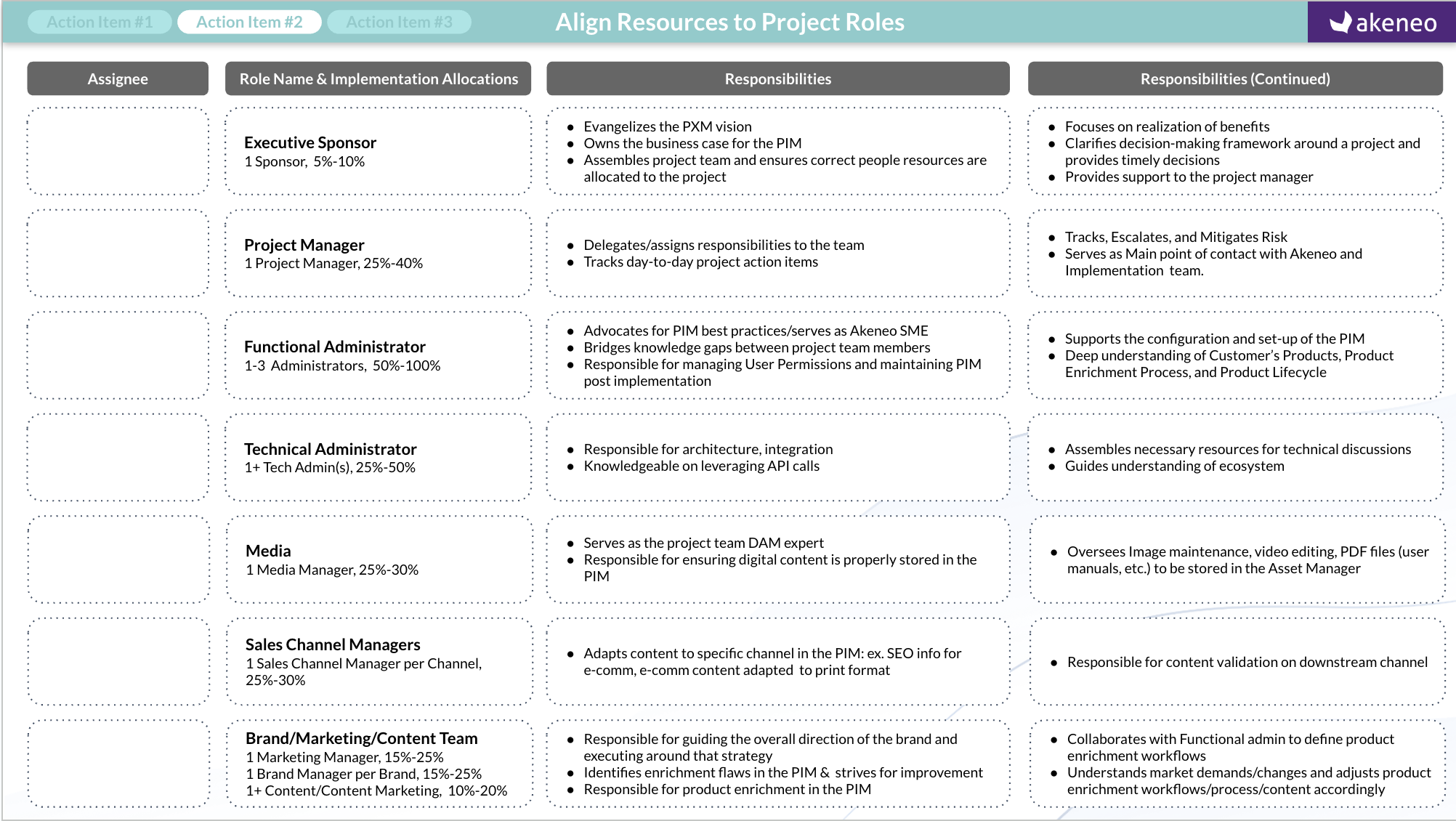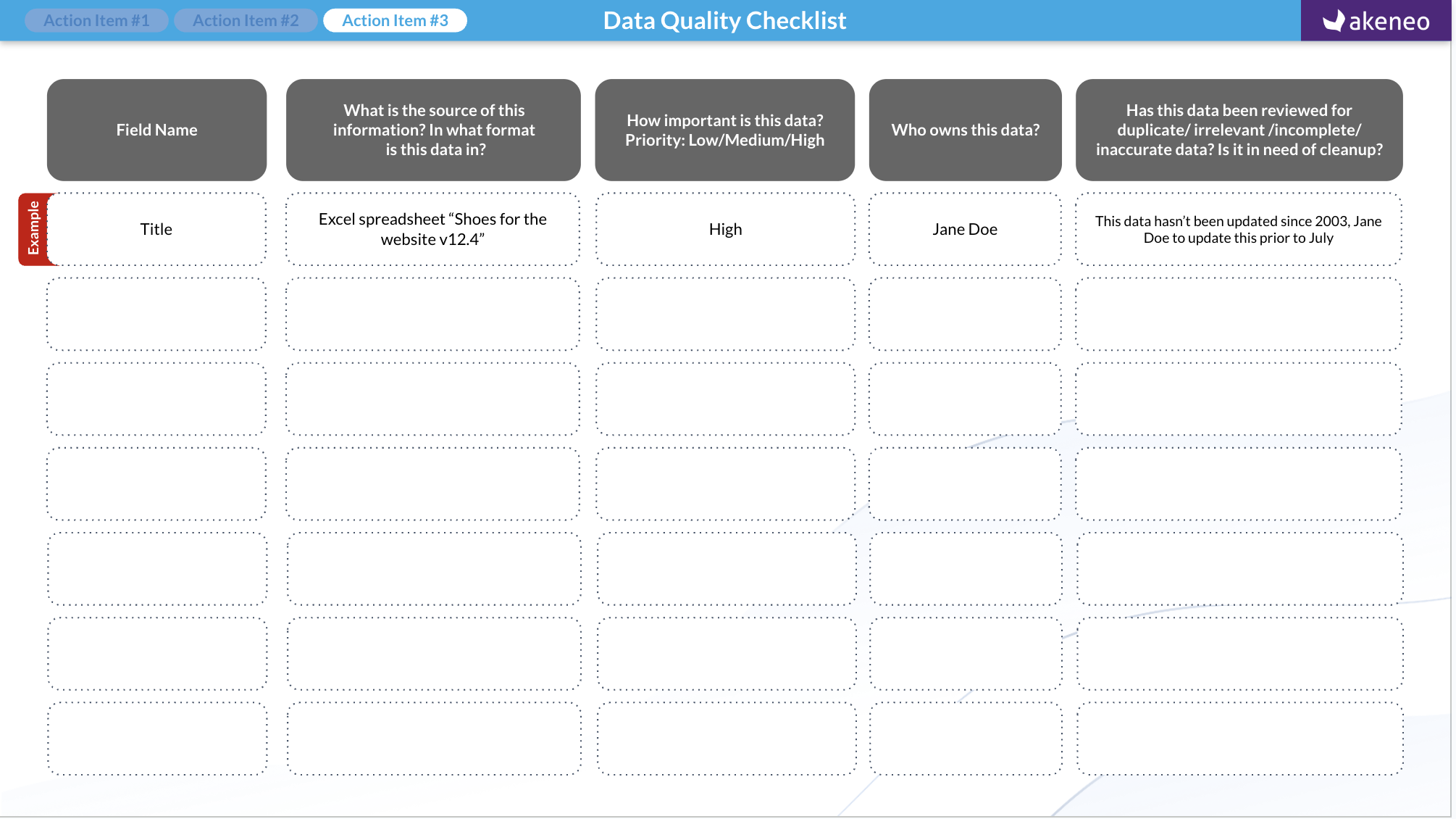Discover the best practices and actionable insights provided by the Akeneo Professional Services team for a quick PIM implementation that reduces the time to value and accelerates your path towards exceptional product experiences, with a free downloadable template.

Keywords
We at Akeneo have been assisting our clients in implementing a new PIM for over 10 years; we would like to share some of those best practices with you.
We’ve compiled the top three focus areas with you to accelerate your time to value, and to mitigate the risk of a project failing altogether:
Let’s dive in a bit deeper on these three topics.
This is a critical first step in your PIM journey, as it provides the answer to “Why a PIM?” “Why Akeneo?” “Why NOW?” Providing answers to these questions enables you to set the foundation for proper change management internally, and to educate your team on why this investment in a PIM is so important to your organization, and to all of them individually. When identifying your business objectives, we have a recommended template to use and Action Item #1 asks the following questions:
PZ Cussons clearly articulates their “why” behind purchasing Akeneo:
In selecting Akeneo, we were confident we could achieve this consistent, high quality product experience across all channels to drive improved sales and drive long-term loyalty, all whilst making the operational process for our teams to deliver to these high standards much more seamless.
What we also include in the template is how you may track or manage the business objectives; providing metrics associated with the business objectives allows us to measure how successful the project is, and see the tangible progress you have made.

It is important to start planning which resources you will need internally to dedicate to your PIM project. This includes both the people that are contributors (creating and enriching product data and assets) and people that are consumers (benefiting immediately from high-quality and always up-to-date product data).
We’ve written other blogs about Building the PIM Dream Team, as it is a vital step in preparing for your PIM journey. We have outlined roles to prepare you for your Akeneo PIM implementation in our downloadable deliverable as Action Item #2; this way, you can start writing down names to each and every role outlined so that both they and you know who is responsible for what.
Assigning team members to roles before implementation puts you ahead of the curve and allows you time to set expectations both internally and externally as to your workload capacity to better prepare for your implementation phase and beyond in your Akeneo journey.
An excellent example of how critical project roles are can be seen from one of our valued customers, Bongenie Grieder:
We needed to find a strategy with our purchasing department to find new goals with brands and work closely with them to create curated content and data for our products and brands. We designed a new team, dedicated to collecting data, so we have three people now. The split by line owner because we have so many types of products, so many prints, so in order for them to know their product more specifically, we split them in their specialization. It has enhanced our time to market.

We all know the saying “garbage in, garbage out,” and this applies to your PIM data as well. Your PIM is only as good as the data included inside of it, so having clean data will accelerate your business’ time to value in your Akeneo PIM journey. We’ve written other blogs about the importance of clean data, and this blog here includes an actionable deliverable diving into HOW one may go about doing so. As an excellent first step, start outlining where different data sets exist, and the owner of this data. Then, start reviewing your data for the quality of it. What do we mean by data quality?
Even if you aren’t certain how you may want to restructure your data to fit into all of Akeneo’s features and functionalities and the best practices into how to leverage them, you can at least cleanse any data that you know needs cleaning up. And if you aren’t certain as to where to start, we recommend leveraging our downloadable deliverable and populating Action Item #3.
One of our valued customers, Thras.io had this to say about data cleanliness:
Data Management is the initial process and that is going to feed in the PIM and that will be what everything is fed into. That will become our foundation. This will help speed the pace and the variety of things that are coming in and try to normalize it and put it into one central source.

Now that you’ve completed all of your action items, what is left is quite simple: beginning your Akeneo PIM journey and becoming one of the many trusted customers within the Akeneo community!
Feel free to download our template outlining the three action steps for a quick PIM implementation, or reach out to an Akeneo expert today to see how we can help you accelerate your PX strategy.

2025 Amazon Prime Day has officially been announced for July 8-11; if you’re a brand looking to take full advantage of one of the biggest sales...
Read more
Explore how these 2025 Experience Award winners elevated product experiences by centralizing data, automating workflows, scaling globally, and...
Read more
Welcome to the digital shelf: the online space where products are discovered, evaluated, and purchased. Whether you’re aiming to boost visibility,...
Read more